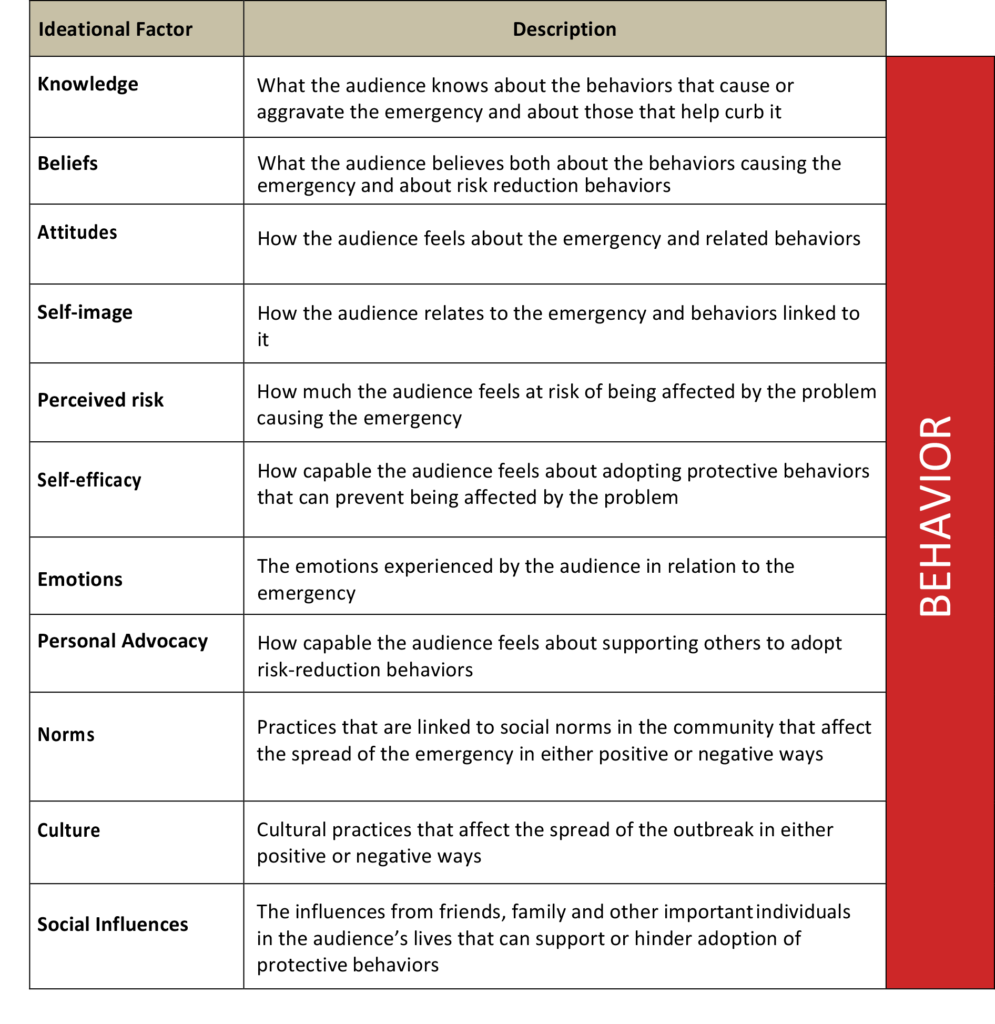Identify the Priority and Influential Audiences’ Knowledge, Attitudes and Practices
Worksheet 4.1 provided you with an indication of who are the most important audience or audiences for the communication response. Once the audiences have been selected, it is important to understand the behaviors they currently practice and what they know and feel about the desired behaviors that will help curb the emergency.
Behavior is not always apparently rational. It is influenced by multiple factors that need to be taken into consideration for the design of an effective behavior change intervention. These factors that shape individual behaviors are known as ideational factors, and affecting those through SBCC activities can lead to behavior change. The table below provides a brief description of each ideational factor.
Description of Ideational Factors

Exploring Ideational Factors
Worksheet 2.2 in Unit 2: Rapid Needs Assessment is an initial step in the analysis of ideational factors. In audience analysis, the exploration of these factors becomes focused on the priority audiences. Again, countries can start considering these factors prior to an emergency occurring, and then use additional data from primary and secondary research conducted during the emergency to expand and refine this information.
Knowledge of ideational factors for each audience group can inform the design of behavior change activities, and available data on audiences should be reviewed along different ideational factors. Some questions to ask about the audience that can provide insights into ideational factors are summarized in the table below.
Questions to Explore Ideational Factors
| Ideational Factor | Questions that Help Explore Ideational Factors |
| Knowledge | What does the audience know about the problem causing the emergency? |
| Beliefs | What beliefs does the audience have about the problem? |
| Attitudes | How does the audience feel about the problem? |
| Self-image | How does the audience see their role with respect to the emergency? |
| Perceived Risk | Does the audience feel at risk of being affected by the problem? How at risk does the audience feel? |
| Self-efficacy | Does the audience feel capable of engaging in risk reduction behaviors to avoid being affected by the problem? How capable do they feel? |
| Emotions | What emotional reactions does the audience have towards the problem? |
| Personal Advocacy | Does the audience feel capable to discuss the problem causing the emergency and advocate for protective behaviors? How capable do they feel? |
| Norms | What are the community’s beliefs and attitudes towards the problem causing the emergency and how it is being addressed? |
| Culture | What cultural beliefs and norms influence how the audiences respond to the emergency and how the outbreak spreads? |
| Social Influences | What levels of support do the audience believe they can get from friends, families and community members to engage in risk reduction behaviors? |

